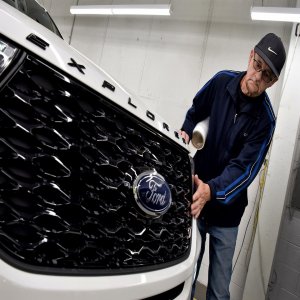Local Strategy Seeks to Boost Market Participation

STORY INLINE POST
While some might see decreasing sales as a challenge in the domestic market, others see an opportunity to showcase a different type of offering. “Sales volumes may have decreased, but the level of quality in vehicles sold is increasing. This shows the Mexican consumer is maturing,” says Raúl Peñafiel, Managing Director of Jaguar Land Rover México.
Dips in the market are concentrated in the entry segments where products do not always meet international criteria, according to Peñafiel. This means that while there might be fewer units sold, they are of a higher quality. “This transformation may be painful, but all change is positive,” he says.
Until recently, Jaguar Land Rover was importing cars and selling them in dollars in a peso-dominated market. In early 2018, the company decided to set up an official branch in the country, which allowed the brand to get closer to the customer and offer services such as a five-year warranty. Jaguar Land Rover started with nine contracts with dealership partners and now has 15. “The market’s response to this new model has been very positive and we are targeting 20 locations by the end of 2020.”
Jaguar and Land Rover are brands with a long and rich history. Land Rover pioneered off-road vehicles for the public, while the sportier Jaguar is known for its racing success. Peñafiel points out that even though they are part of the same group, the brands still try to maintain an independent spirit. Jaguar’s engine technology is its own, which can make them more expensive than those of competitors. However, this gives the brand the independence to design its technology according to its clients’ demands.
Among the reasons why Jaguar Land Rover saw significant success in the past decade is because it offered cars that could be used for more extreme driving experiences, as well as ordinary day-to-day activity. At the same time, both brands were successful in adapting to changing market conditions, first with the rise in popularity of the SUV and later with the growing importance of sustainability versus performance. “Consumers moved from large engines with great power to cars that could deliver the same emotive experience but with greater sustainability, not only in terms of lower fuel consumption but also adaptability to different environments,” says Peñafiel.
The company has even ridden the electrification wave. Jaguar Land Rover has several hybrid cars, but the 2018 Jaguar I-Pace was the first fully electric vehicle. Peñafiel points out that this car can offer the same driving experience as any fuel-powered Jaguar but with the potential for a zero-carbon footprint. “Cars like the I-Pace can help break the public myth that electric vehicles are no fun to drive,” he says. Having sold 70 units nationwide in 2018, I-Pace’s price tag makes it unreachable for the majority of the Mexican population. However, those who do buy it tend to be “people with broad social influence,” says Peñafiel.
Price has been Jaguar Land Rover’s main challenge when targeting the Mexican market. One of the reasons why the group wanted closer contact with clients was because its cars are part of the luxury niche. “People do not necessarily need a Jaguar or a Land Rover vehicle. However, they buy them because they evoke a certain experience,” says Peñafiel. The company tries to demonstrate this to prospective clients by organizing events where people can try out the cars on a race track or off-road environment. “The goal of these driving experiences is for people to walk away with a smile,” he says.
Jaguar Land Rover is a British OEM and a subsidiary of Tata Motors. It is headquartered in Coventry, UK. Having previously only imported cars, the company set up offices and dealerships in Mexico in 2018








 By Jan Hogewoning | Journalist and Industry Analyst -
Mon, 08/03/2020 - 05:00
By Jan Hogewoning | Journalist and Industry Analyst -
Mon, 08/03/2020 - 05:00















